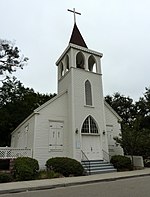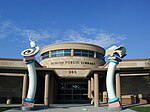Rancho San Ramon (Amador)
1834 establishments in Alta CaliforniaCalifornia ranchosDanville, CaliforniaDublin, CaliforniaRanchos of Contra Costa County, California

Rancho San Ramon (St. Raymond Ranch in Spanish) was a 20,968-acre (84.85 km2) Mexican land grant in the southern San Ramon Valley of present-day Contra Costa County, California. Rancho San Ramon (Pacheco-Castro) was adjacent in the northern San Ramon Valley. It was given in 1834 by Governor Jose Figueroa to Jose Maria Amador.The five-square-league (60 square miles) San Ramon grant stretched down the San Ramon Valley from what is now southern Danville on the north to Dublin on the south, and from the crest of the western ridge to the crest of the east, and encompassed present-day Dougherty Valley. The Dublin area was called "Amador" for many years.
Excerpt from the Wikipedia article Rancho San Ramon (Amador) (License: CC BY-SA 3.0, Authors, Images).Rancho San Ramon (Amador)
Brittany Drive,
Geographical coordinates (GPS) Address Nearby Places Show on map
Geographical coordinates (GPS)
| Latitude | Longitude |
|---|---|
| N 37.71 ° | E -121.95 ° |
Address
Brittany Drive 8098
94583
California, United States
Open on Google Maps






